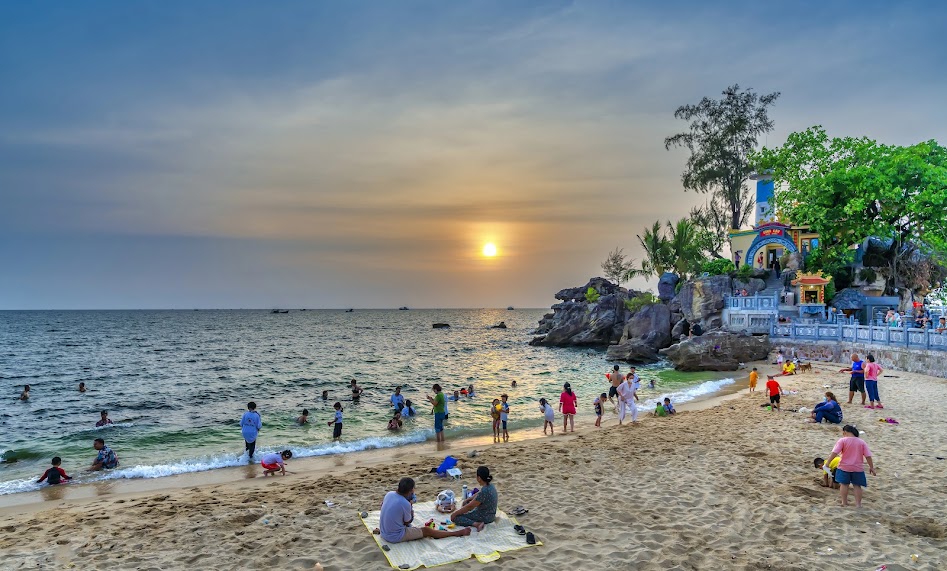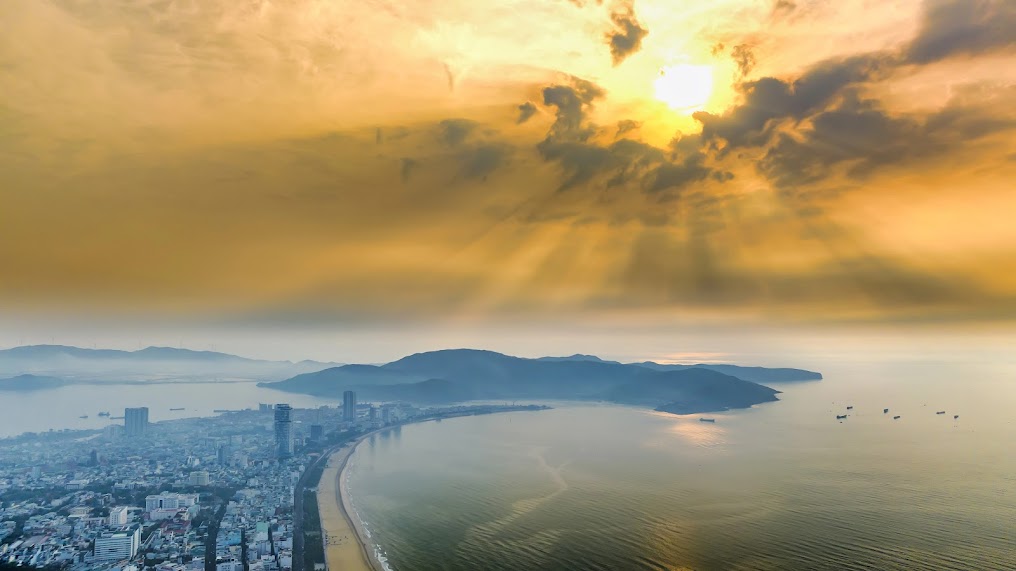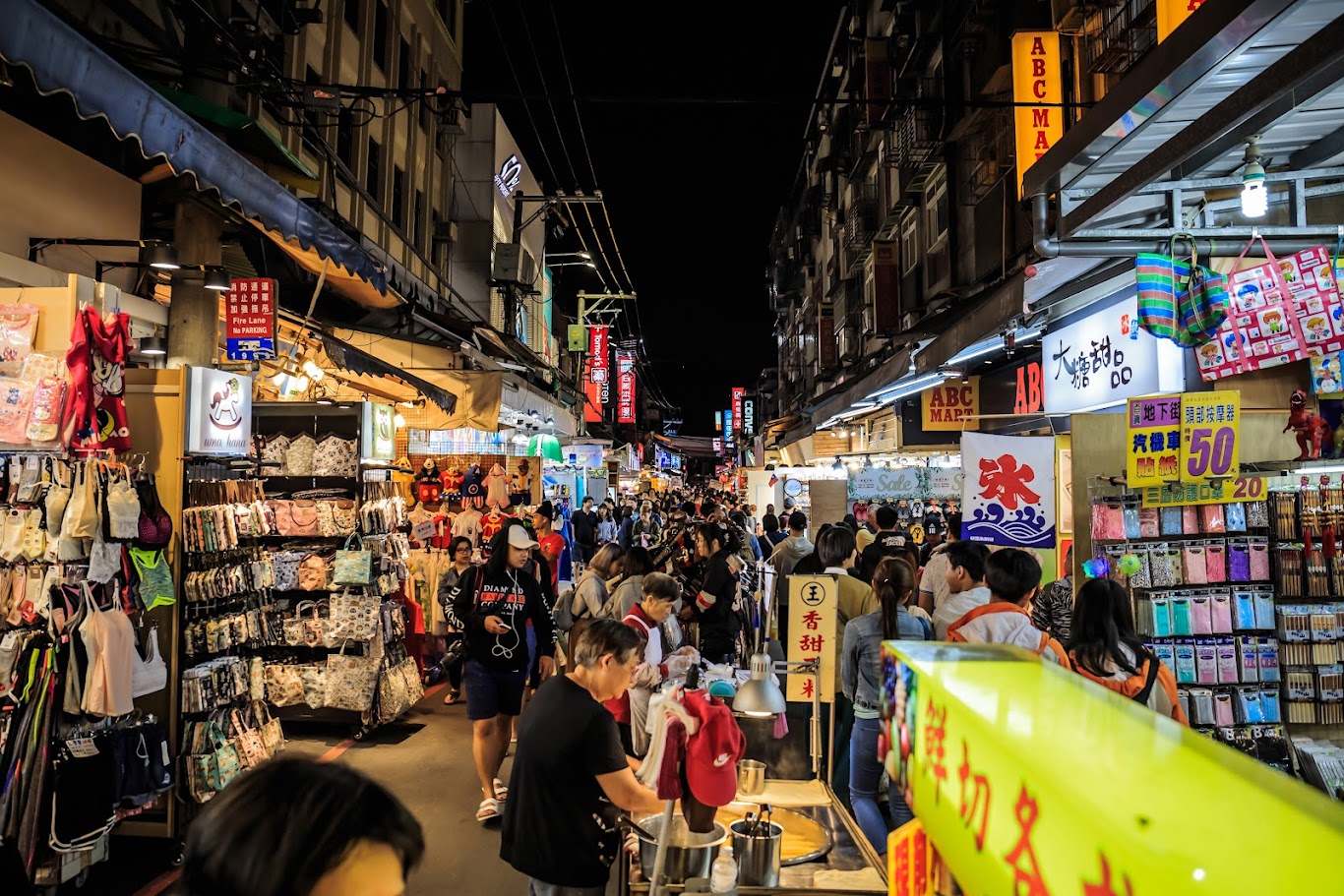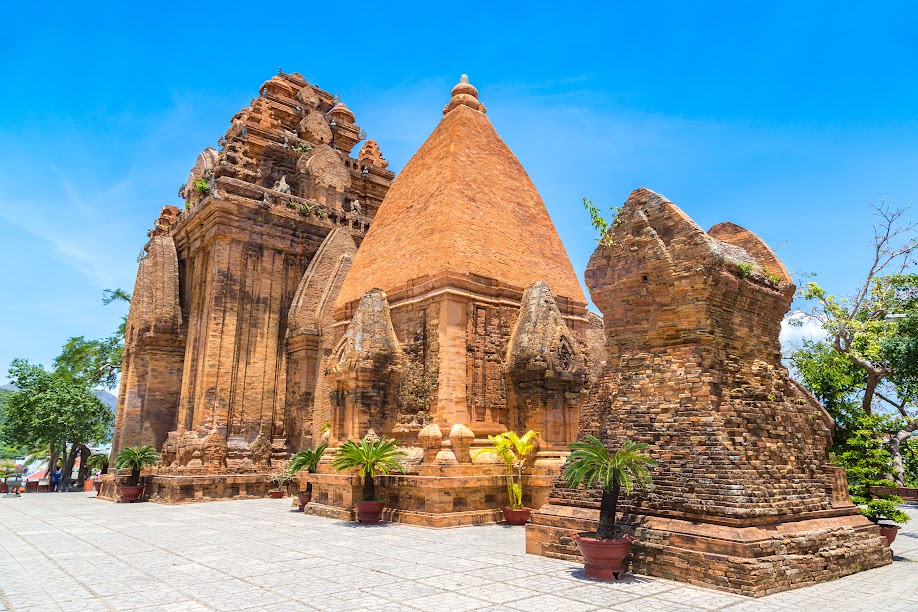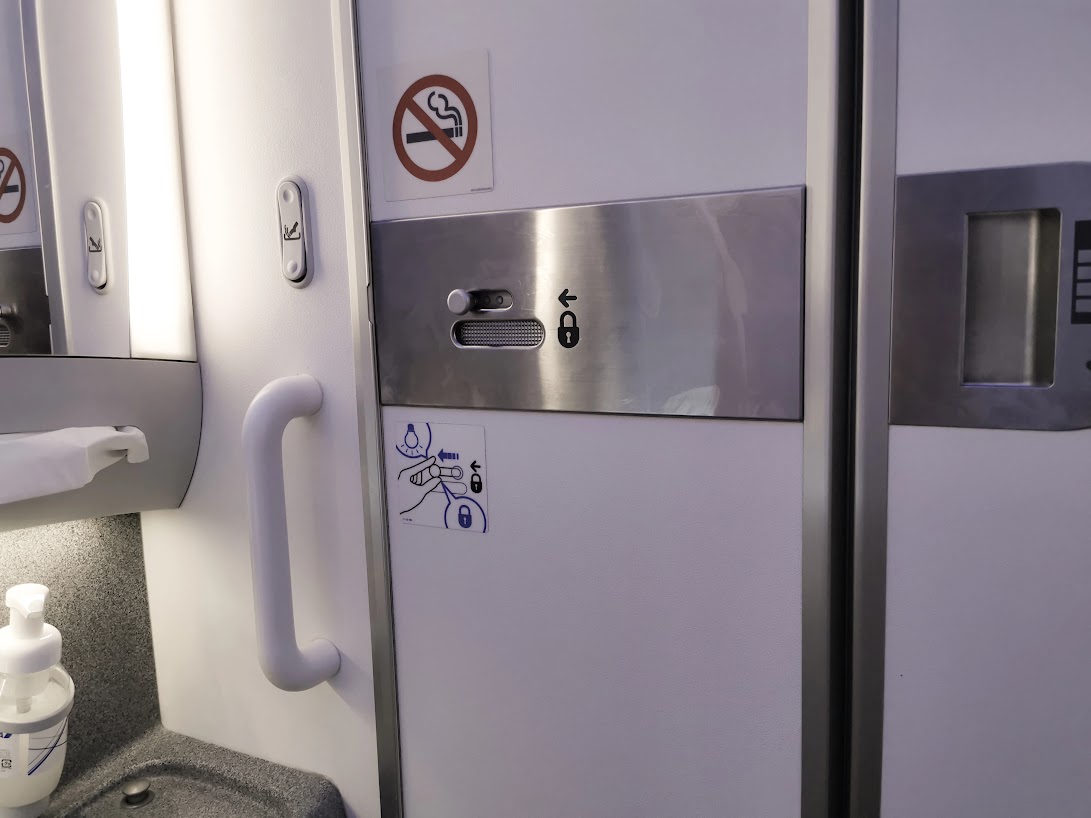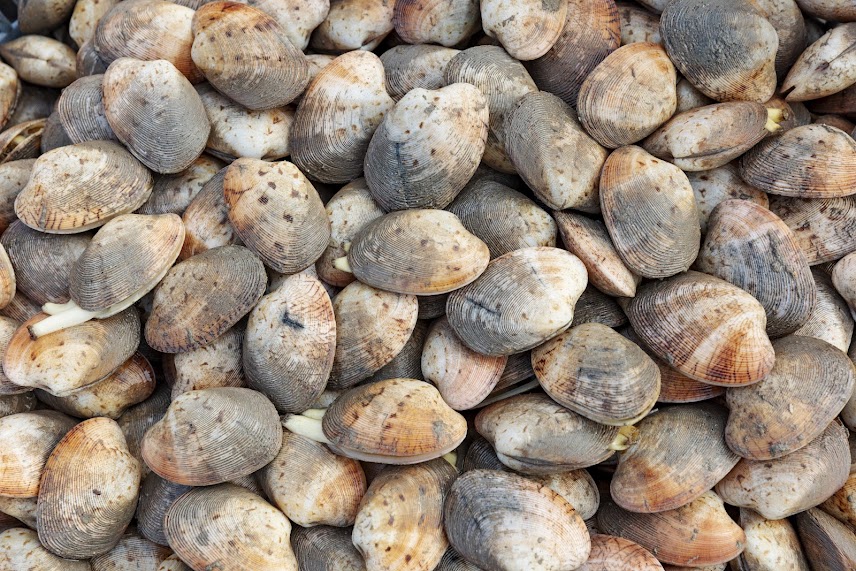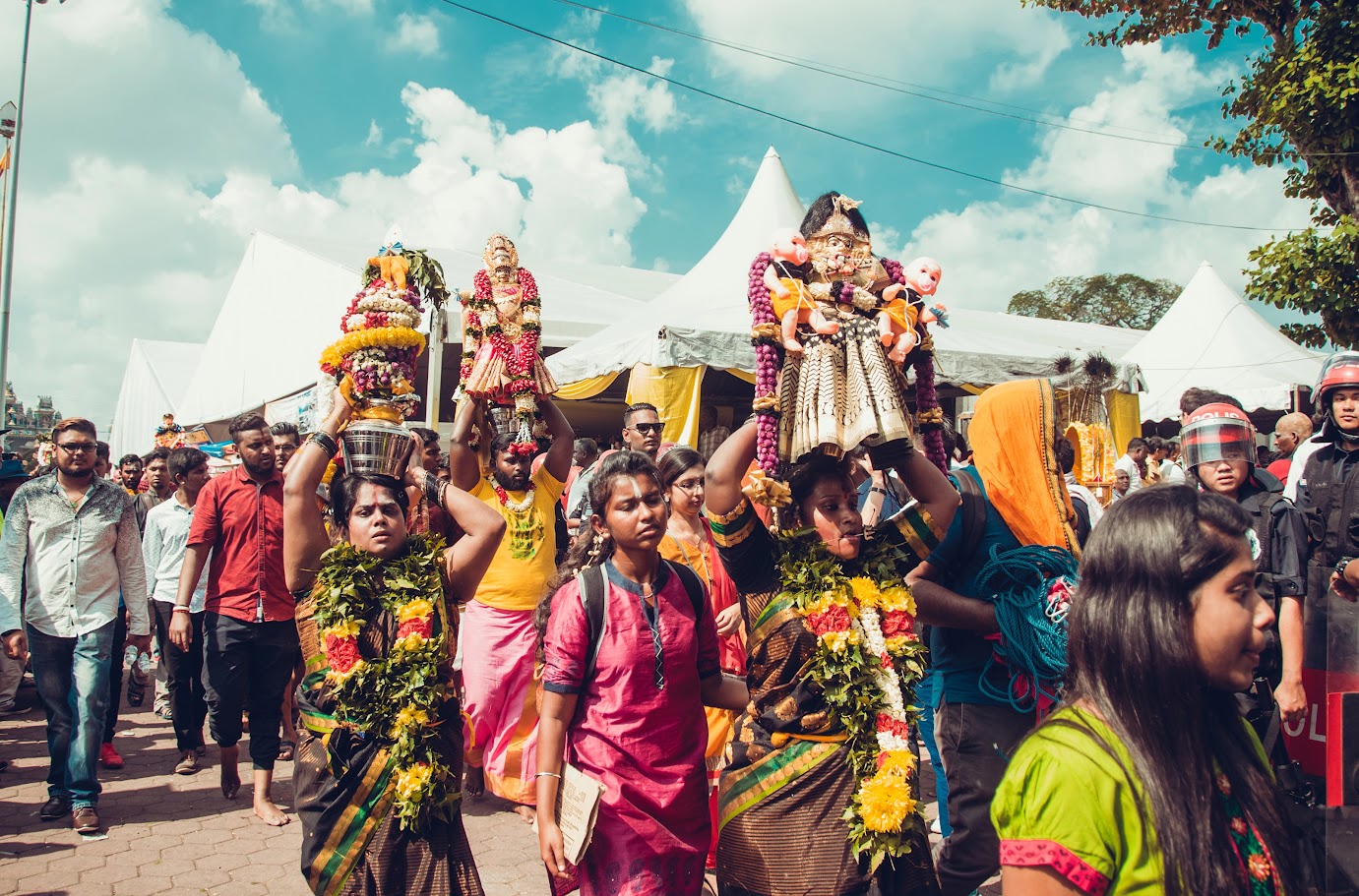
- SkyJoy
- Chuyến bay của tôi
- Online Check-in
- E-Menu
- E-Visa
- Dịch vụ chuyến bay
- Dịch vụ khác
Ngày đi

Ngày về
Where to go and how much does it cost for a 4-day, 3-night self-guided tour in Sichuan?
Sichuan, known as "Heaven on Earth," has long been a dream travel destination for many Vietnamese tourists. With a 4-day, 3-night self-guided trip, tourists can fully explore the beauty of Sichuan through famous sights such as Chengdu, Jiuzhaigou, Leshan, and more, while being flexible with their schedule and saving considerably compared to organized tours.
Join Vietjet to discover more about the self-guided Sichuan experience over 4 days and 3 nights!
1. What is the best season to visit Sichuan, China?
Sichuan's natural landscape changes with each season, captivating tourists with its unique beauty.
-
Spring (March to May): The weather is relatively cool and the scenery is vibrant with many blooming flowers.
-
Summer (June to August): Considered the peak tourist season in Sichuan with many festive events. The weather is sunny, ideal for sightseeing and outdoor activities.
-
Autumn (September to November): Sichuan changes its "clothes" to a vibrant gold and red with the leaves changing colors. The weather is also cooler and more comfortable.
-
Winter (December to February): During the colder months, tourists have the opportunity to see snow and experience activities like skiing.
Depending on personal preferences and needs, tourists can choose to visit Sichuan at different times. For those who enjoy lively cultural activities and exploring Sichuan, summer is the ideal time, though it may be more expensive. If you prefer dreamy natural scenery and cool weather, don’t miss the spring and autumn seasons. Traveling to Sichuan in winter can be more cost-effective and offers the chance to enjoy the chilly atmosphere in this populous nation.
See more: Travel tips for visiting China on your own for non-Chinese speakers

Sichuan leaves an impression on tourists with its poetic beauty, diverse culture, and unique cuisine.
2. How to get to Sichuan
2.1 Getting to Sichuan
-
Máy bay: Đây là phương tiện nhanh và phổ biến nhất để đến Tứ Xuyên. Hiện Vietjet đang khai thác nhiều chuyến bay thẳng từ Việt Nam đến Tứ Xuyên với mức giá chỉ từ 490.000 Đồng (Chưa bao gồm thuế, phí) giúp du khách có trải nghiệm di chuyển thuận tiện và tiết kiệm nhất.
-
Đường bộ: Ngoài ra, từ Việt Nam, bạn hoàn toàn có thể di chuyển đến Tứ Xuyên bằng tàu hỏa, xuất phát từ Lào Cai (Việt Nam) sang Côn Minh (Trung Quốc). Sau đó, tiếp tục đi từ Côn Minh đến Tứ Xuyên. Tuy nhiên, phương án này khá mất thời gian với nhiều lần chuyển tàu và xe.
-
By Air: This is the fastest and most popular means to reach Sichuan. Vietjet currently offers several direct flights from Vietnam to Sichuan starting at just 490,000 VND (excluding taxes and fees), providing a convenient and economical travel experience.
-
By Land: Additionally, from Vietnam, you can travel to Sichuan by train, starting from Lao Cai (Vietnam) to Kunming (China), and then continue from Kunming to Sichuan. However, this option is quite time-consuming with multiple transfers.
See more: Procedures for obtaining a visa to China
2.2 Getting around in Sichuan
Sichuan has a developed transportation system with many diverse means of transportation to meet the needs of tourists. Below are some popular ways to get around in Sichuan:
-
By Air: For travel between major cities in Sichuan, choosing flights can offer the most convenient and time-saving experience.
-
By Train: There are many train routes connecting cities and famous locations in Sichuan. Traveling by train allows you to enjoy the stunning routes in this "Heaven on Earth."
-
By Bus: For city travel in Sichuan, buses are the most cost-effective method, costing about 2 RMB (7,000 VND) per trip.
-
By Metro: The metro provides a fast way to travel without traffic jams and has stations near most major attractions and recreational areas in Sichuan. To ease travel by metro, tourists should download Chinese metro apps and maps in advance.
-
By Taxi: If you want a convenient travel experience without long waits and to save on walking, taxis are a good option to consider. However, taxis are much more expensive compared to public transportation options.
See more: Detailed guide on getting around in China
3. Where to visit during a 4-day, 3-night trip in Sichuan?
3.1 Chengdu - "The Heart" of Sichuan
As the capital of Sichuan, Chengdu is located in the Sichuan Basin, surrounded by the Longmen Mountains to the west and the Daba Mountains to the east. Chengdu is famous for its ancient history, rich culture, and unique cuisine. Additionally, Chengdu is known as the "Panda City" as it is home to over 100 giant and red pandas, attracting visitors from all over the world.
Some famous tourist spots in Chengdu include the Chengdu Panda Base, Wuhou Shrine, Jinli Ancient Street, Tianfu Square, among others. Besides exploring and enjoying recreational activities, visitors must try Chengdu's local dishes - the city is known as the "Culinary Capital" of China.
See more: Travel costs in Chengdu - the happiest city in China
3.2 Jiuzhaigou - A World Natural Heritage
Jiuzhaigou is a nature reserve and national park located in the northern part of Sichuan Province, China. It has been recognized as a UNESCO World Natural Heritage site due to its pristine, unique, and picturesque beauty.
Jiuzhaigou is famous for its colorful lakes, majestic waterfalls, virgin forests, and diverse ecosystems. Particularly, the 108 lakes in Jiuzhaigou vary in colors like emerald green, sapphire blue, golden, and amethyst, creating a truly magical natural painting.
Visitors to Jiuzhaigou can explore the Five Flower Lake, Nuorilang Waterfall, Zharu Valley, Rize Valley, and more, enjoying the pristine beauty and fresh nature of the area.

The magical nature in Jiuzhaigou looks like a mural painting with overlapping mountains and rivers.
3.3 Leshan - Home to the World's Largest Stone Buddha
Located about 130km south of Chengdu, Leshan is famous for the world's largest stone Buddha, attracting visitors worldwide to come and admire it.
The Buddha, standing 71m tall, was carved into the cliff of Lingyun Mountain in the 8th century. With its immense size and scenic surroundings, the Leshan Giant Buddha was recognized as a World Heritage Site by UNESCO in 1996. Besides the Giant Buddha at Lingyun Mountain, the scenic area of Leshan also features other famous sites like the reclining Buddha, Lingyun Mountain, and Wuyou Temple. Visitors can engage in mountain climbing and admire the exquisite masterpieces at this site.
3.4 Danba Jiaju - "A Photographer's Paradise" in Sichuan
Danba Jiaju, located in Kangding, Sichuan, appears at first glance like a quaint European village with red-roofed houses nestled among snowy mountains, golden leaf-covered valleys, and emerald rivers. Thanks to its majestic natural landscape and unique Tibetan architecture, it is known as a "photographer's paradise" for those who love traveling in China.
When visiting Danba Jiaju, in addition to taking lifetime photographs, tourists should not miss out on exploring the local culture, experiencing customs, and tasting the delicious Tibetan dishes.
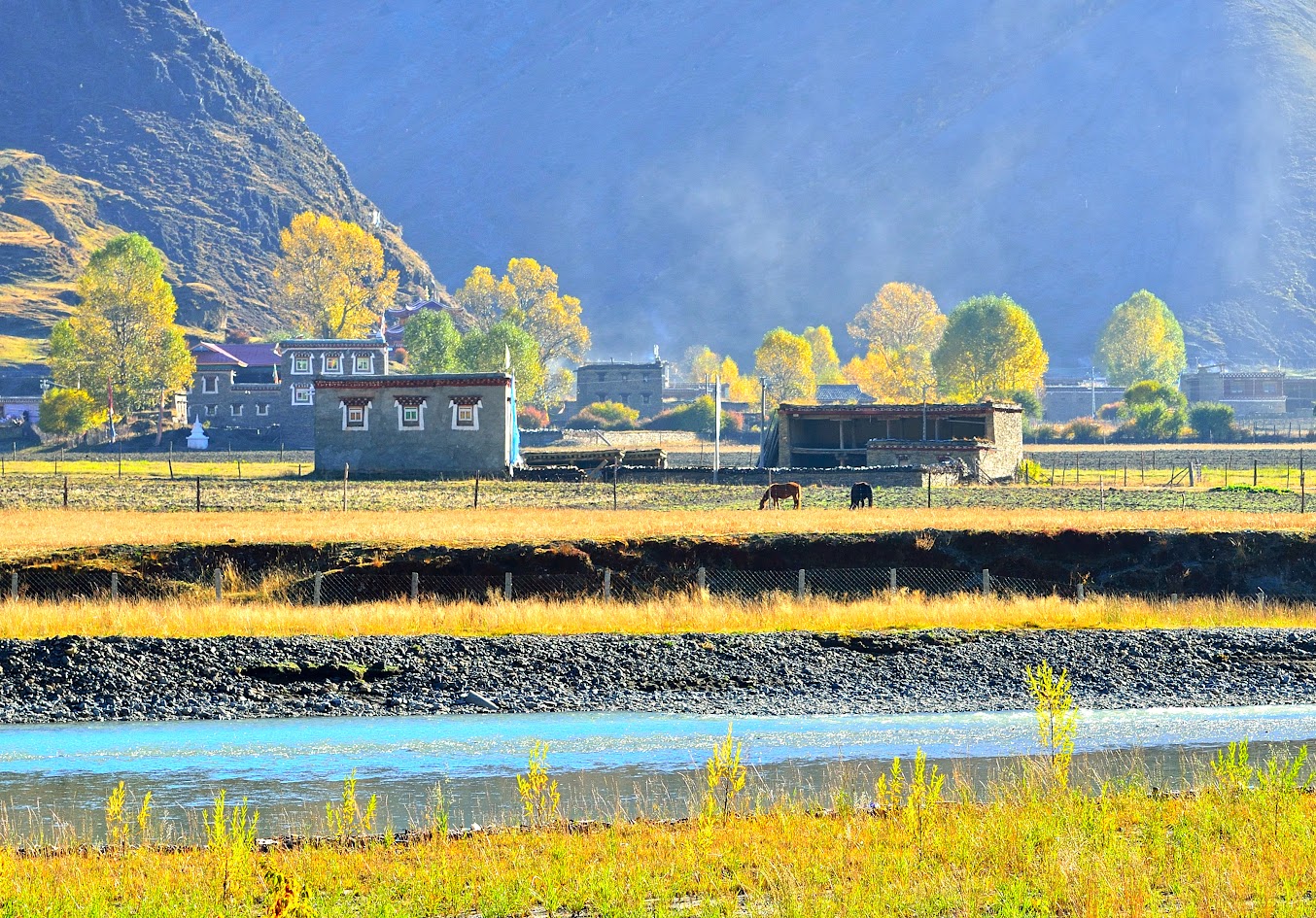
The town of Danba Jiaju is known as a "photographer's paradise," boasting beautiful landscapes, unique architecture, and a rich local culture.
4. Must-try dishes in Sichuan
Sichuan cuisine is famous for its spicy flavors, rich ingredients, and attractive presentation. Here are some must-try dishes when visiting Sichuan:
-
Sichuan Hotpot: Renowned for its explosively spicy flavor, the Sichuan hotpot delights diners with its rich broth infused with fresh ingredients like beef, seafood, and vegetables. The broth, made from bones and blended with Sichuan peppers, star anise, cinnamon, and cardamom, creates an irresistibly spicy and aromatic flavor.
-
Mapo Tofu (Sichuan Tofu): This famous dish from Sichuan wins over food lovers with the perfect blend of spicy chili, rich ground meat, and soft tofu. Each bite of the creamy white tofu drenched in vibrant red chili oil is unforgettable.
-
Fuqi Feipian: This dish typically uses beef heart and tongue cooked with Sichuan peppercorns to create a numbingly spicy taste, mixed with dried chili, sesame oil, vinegar, sugar, garlic, and ginger, offering a stimulating flavor experience. Fuqi Feipian is usually served cold and is a popular snack among Sichuan locals.
-
Twice-Cooked Pork (Hui Guo Rou): The pork is boiled first then sliced and stir-fried with spicy sauce, green garlic leaves, and fermented black beans. The tender, fatty meat combined with the crunchy sweetness of the vegetables and distinctive spicy flavor makes it incredibly appetizing.
-
Mala Liangfen: A popular Sichuan snack, Mala Liangfen consists of jelly made from mung beans served with spicy sauce. Accompaniments often include roasted peanuts, shredded cucumber, fresh herbs, and fresh chili, adding flavor and a refreshing touch to the dish.
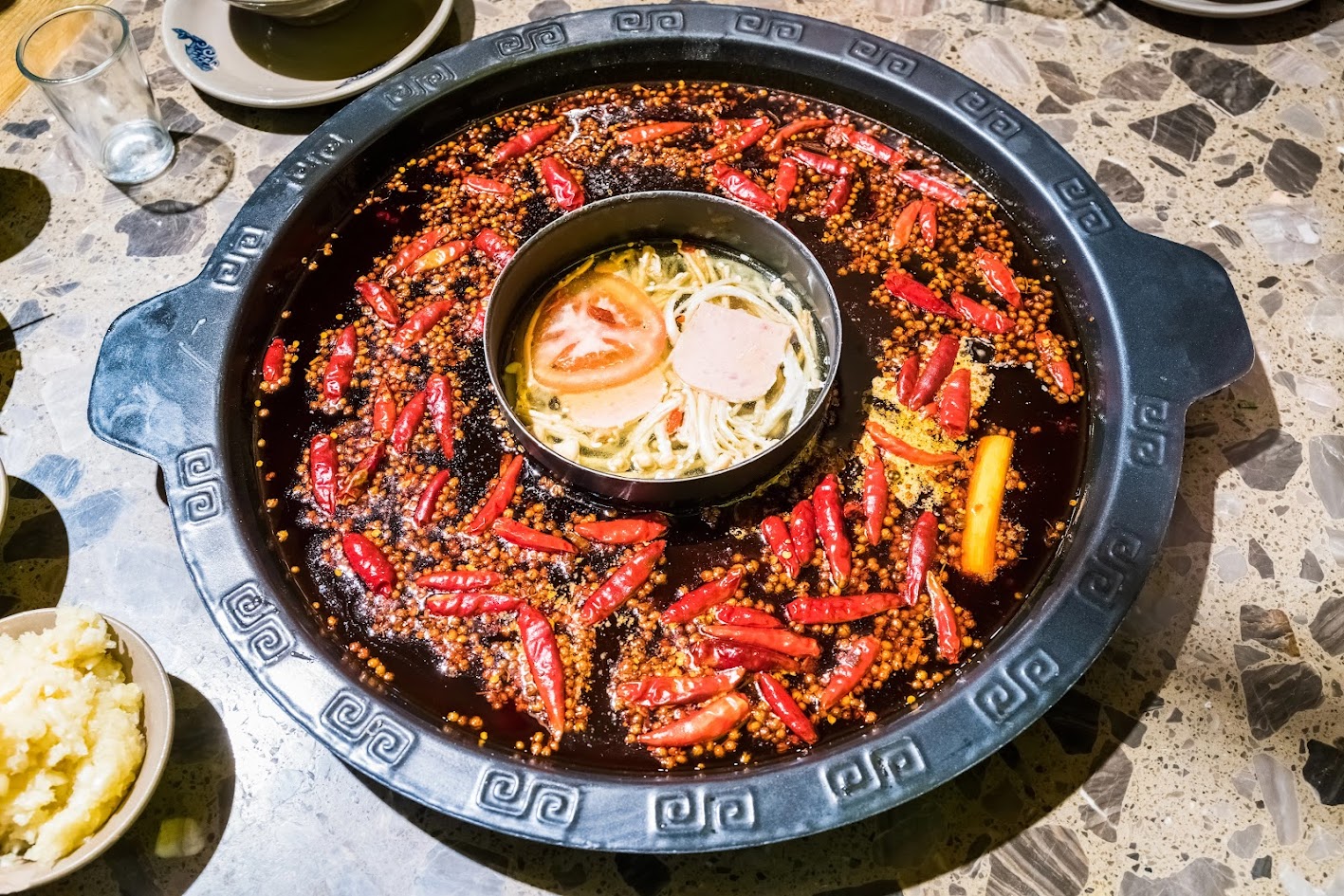
Sichuan is famous for its spicy and attractive dishes. diverse forms of processing.
In general, Sichuan cuisine is moderately to hotly spicy, visitors should be careful to ask the restaurant about the level of spiciness before ordering. Besides, you can dip the dishes in soup or eat them cold to reduce the spiciness and still feel the delicious flavor of typical Sichuan dishes.
See more: Top 9 delicious Chengdu dishes you can't miss
5. Self-sufficient travel expenses to Sichuan for 4 days and 3 nights
The cost of traveling to Sichuan on your own for 4 days and 3 nights depends on many factors such as: time of travel, means of transportation, places to visit, shopping needs,... To make it easier for you to imagine, Below are some basic budget estimates:
Visa application costs
-
Single-entry Chinese visa application fee: 45 USD/person (about 1.2 million VND)
-
Double-entry Chinese visa application fee: 68 USD/person (about 1.7 million VND)
-
Fee for applying for a 6-month multiple-entry Chinese visa: 90 USD/person (about 2.3 million VND)
Travel expenses
-
Travel costs to Sichuan: Round-trip airfare Vietnam - Sichuan: about 4,000,000 - 8,000,000 VND/person (including taxes and fees)
-
Travel costs in Sichuan:
-
-
Bus: 2 Yuan (7,000 VND)/trip
-
Subway: 2 to 7 yuan (7,000 to 24,000 VND)
-
Train: 85 - 180 Yuan (300,000 - 1,000,000 VND)/trip
-
Taxi: 8 to 12 yuan (26,000 to 40,000 VND)/km
-
Cost of stay
-
Budget hotel: 500,000 - 1,000,000 VND/night
-
4-star hotel: 1,500,000 - 2,000,000 VND/Night
Food cost
-
Affordable dining: 50,000 - 200,000 VND/person/meal
-
Eating at restaurants: 300,000 - 500,000 VND/person/meal
Sightseeing costs
-
Tickets to visit tourist attractions: 50,000 - 200,000 VND/person/site
-
Cost of participating in entertainment activities: 100,000 - 500,000 VND/person/activity
|
In short, when traveling to Sichuan for 4 days and 3 nights, you will incur the following expenses:
|
Thus, the cost of self-sufficient travel to Sichuan for 4 days and 3 nights will range from 15,000,000 - 25,000,000 VND/person. This is a reference fee, which may change depending on your needs and travel time.
Vietjet has just reviewed some necessary information for your reference for your 4-day, 3-night trip to Sichuan. If you fall in love with the scenic spots and delicious dishes here, don't hesitate to book a flight to Sichuan right away. Every Friday, Vietjet has a promotion for 0 VND air tickets for all international flights. Details HERE.
Update Vietjet's incentive guide and promotions at:
- Facebook: https://www.facebook.com/vietjetvietnam
- Instagram: https://instagram.com/vietjet
- YouTube: https://www.youtube.com/VietjetOfficial
- TikTok: https://www.tiktok.com/@vietjetvietnam
- Zalo: https://oa.zalo.me/vietjet







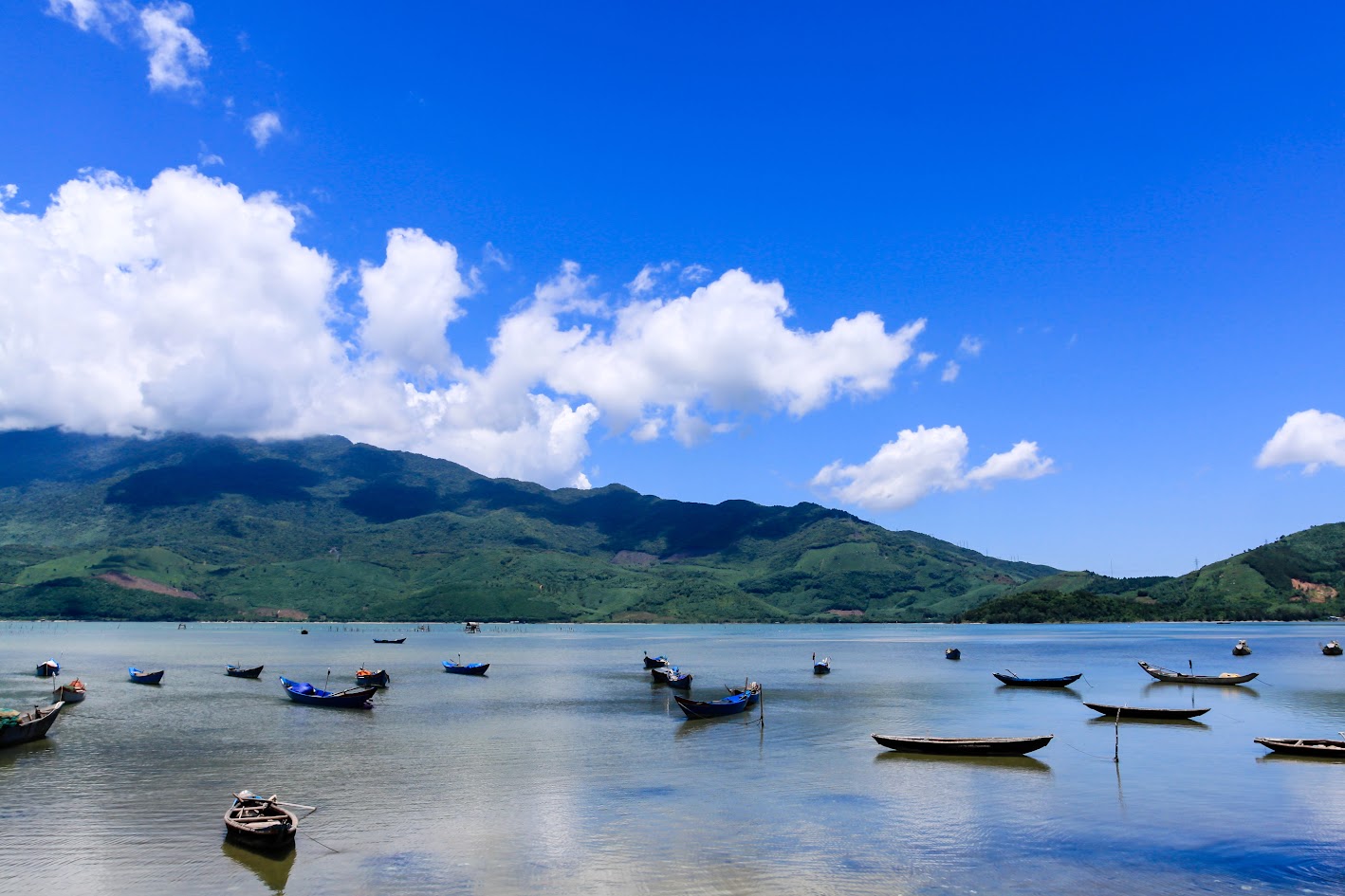

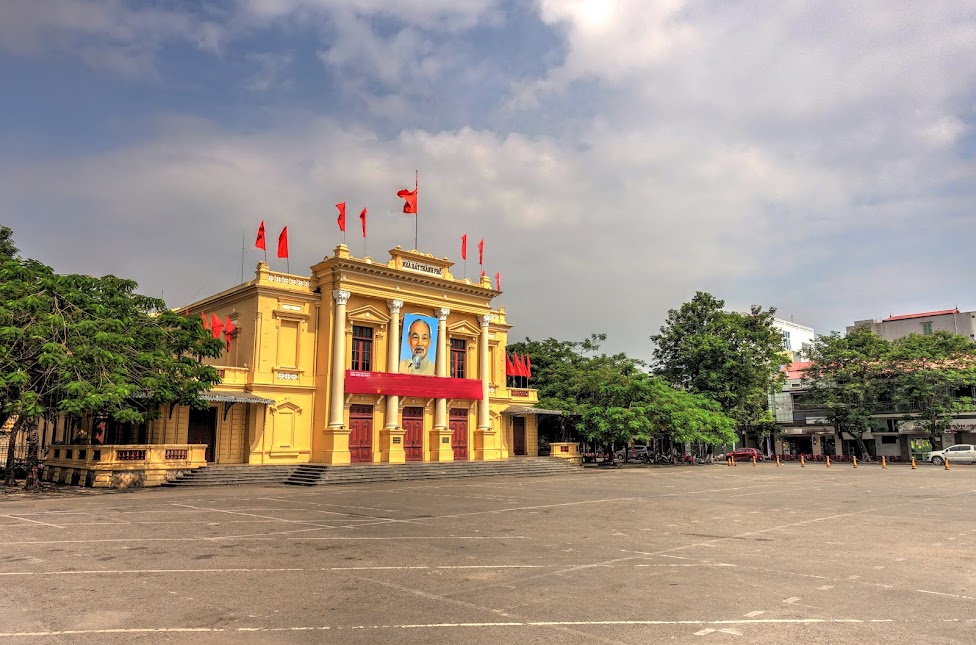
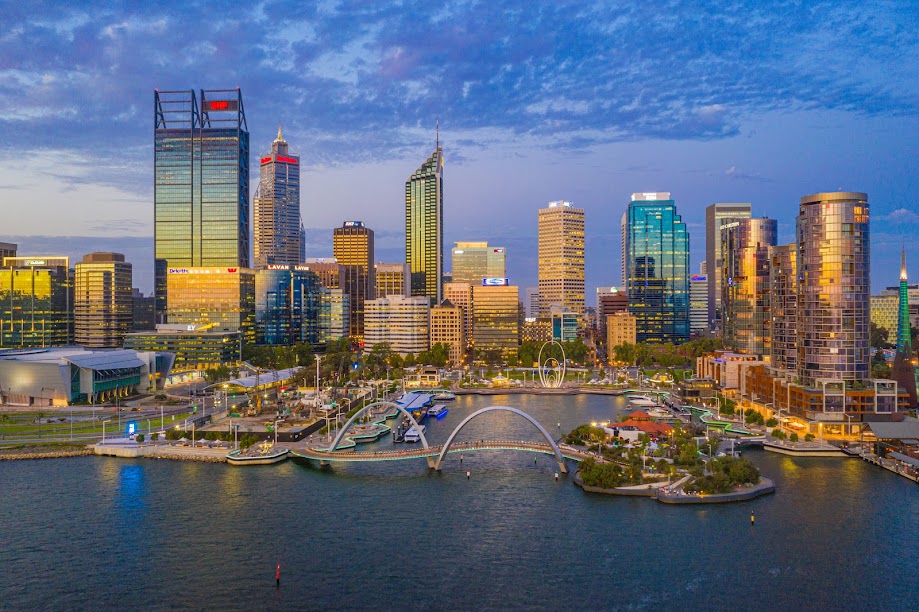






















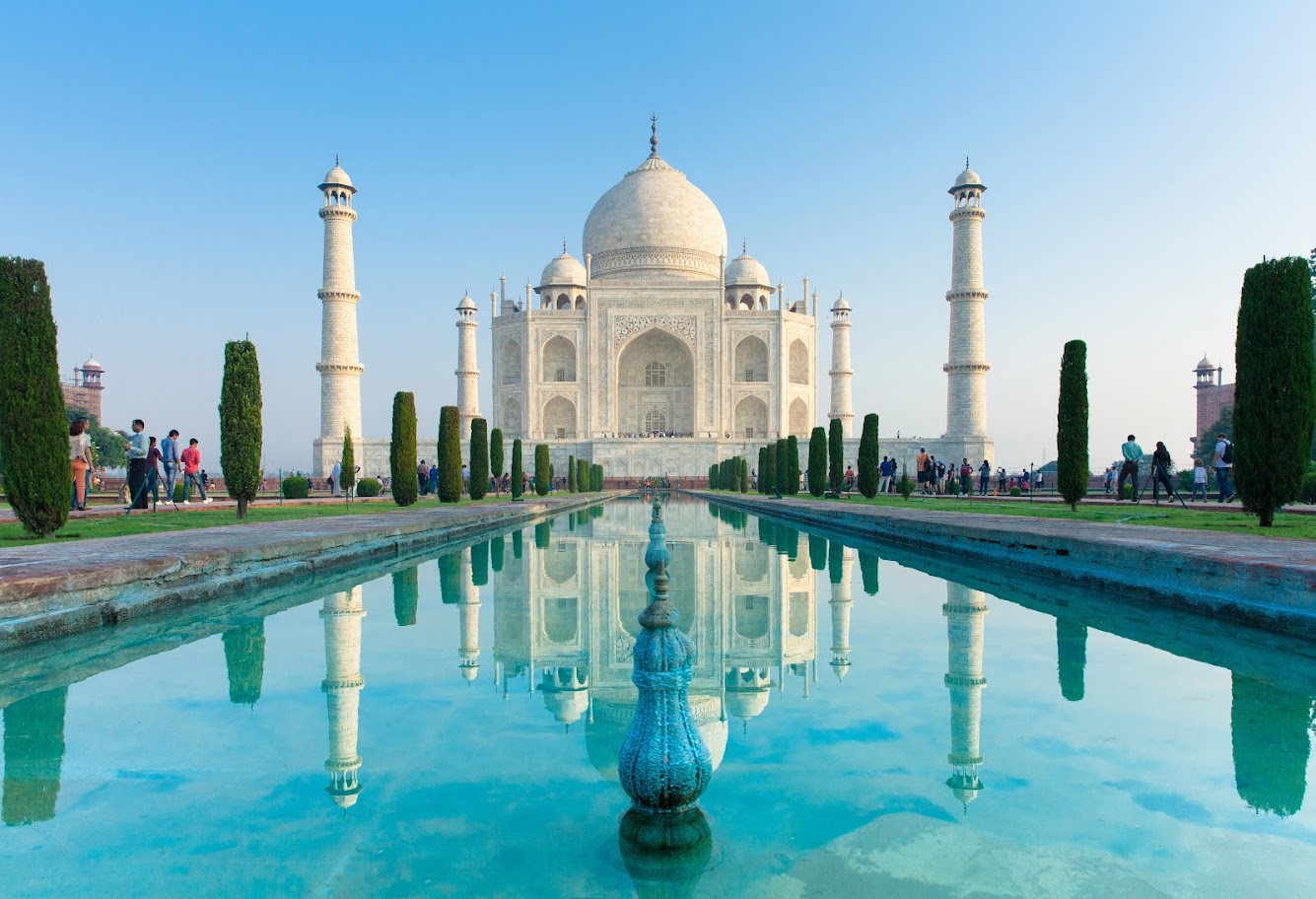










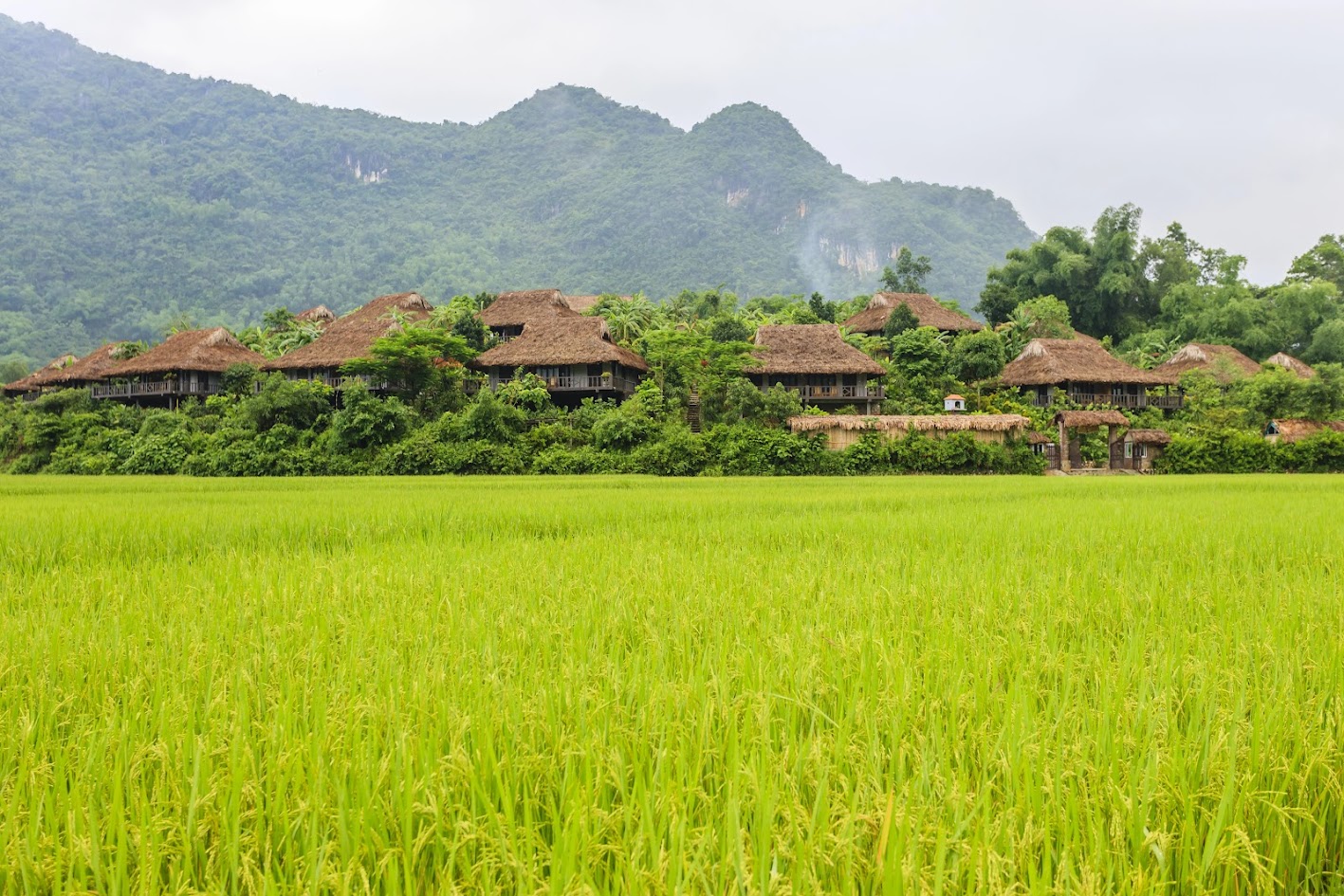






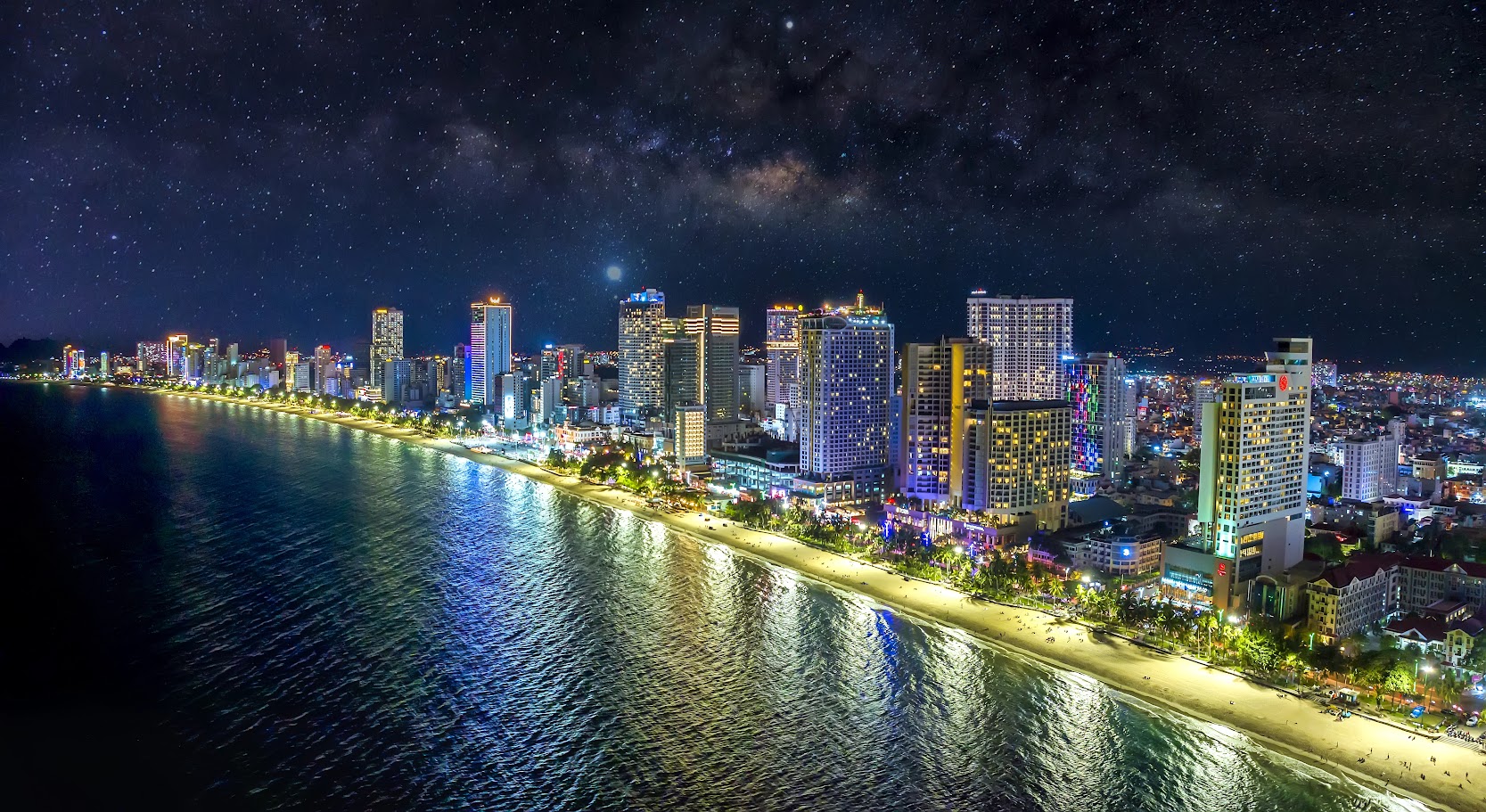












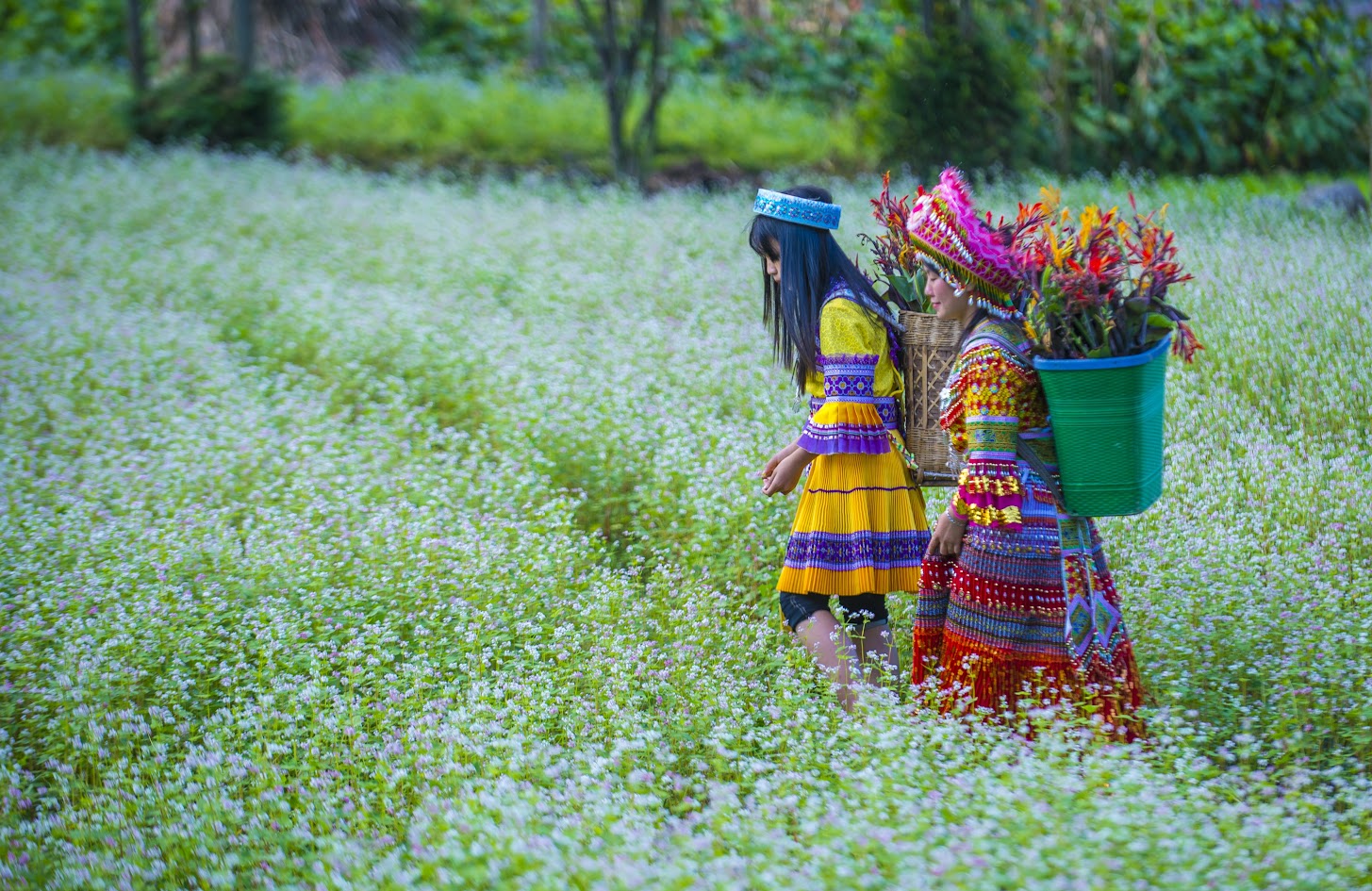












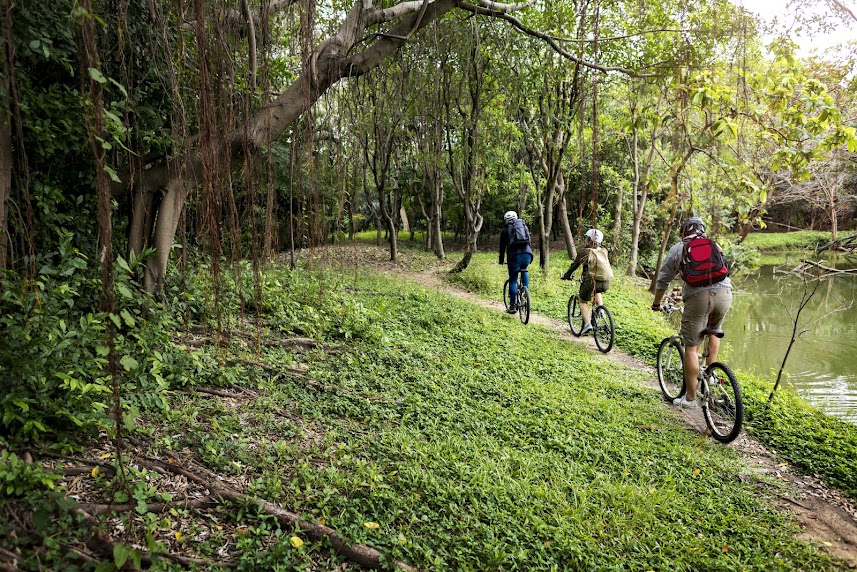



















































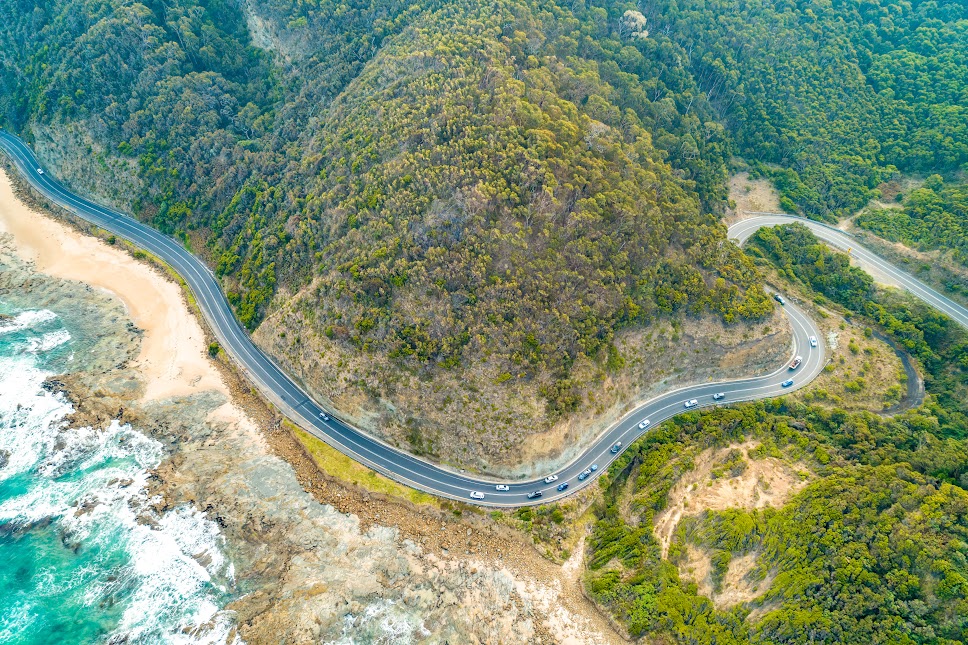


































![[FAQ] What is the Best Time to Travel to South Korea?](https://vj-prod-website-cms.s3.ap-southeast-1.amazonaws.com/shutterstock533705653supersize-1696644100090.jpg)








